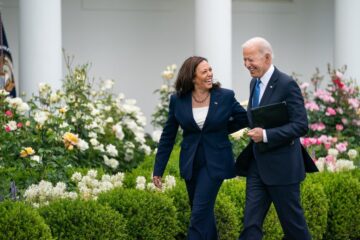Welcome back to Week 42 in my weekly reports analyzing the Covid-19 pandemic and its effects on the country and higher education in a new Biden-Harris administration. For those of you reading this on my blog, Off the Silk Road, I have also launched a newsletter, where these reports can be sent directly to your email each week. Click here to subscribe.
Last week, we discussed how President Biden intends to confront the crisis in his first few days in office. This week’s theme is variants and vaccines, and we will show why rapid vaccination is key to saving lives and preventing further mutations.
A national look
As President Biden enters week two of his presidency, he continues to take decisive action to address the pandemic on multiple fronts. This week, his science team held the first of regular briefings with public health officials, and his data team released the full set of state-level reports, previously kept secret during the Trump administration. These are notable steps towards transparency and will be critical in improving the public health response. This all comes as former coronavirus response coordinator Dr. Deborah Birx spoke out and recounted her experiences working for the previous White House Coronavirus Task Force. “I saw the president presenting graphs that I never made,” Birx said on CBS’ “Face the Nation.” “So, I know that someone — or someone out there or someone inside was creating a parallel set of data and graphics that were shown to the president.” Dr. Anthony Fauci opened up in a New York Times interview: “I would try to express the gravity of the situation, and the response of the president was always leaning toward, ‘Well, it’s not that bad, right?’ And I would say, ‘Yes, it is that bad.’ It was almost a reflex response, trying to coax you to minimize it. Not saying, ‘I want you to minimize it, but, ‘Oh, really, was it that bad?’”
Much of the discussion this week revolves around variants, three of which could have major implications for the pandemic in the U.S. Both the B.1.351 (first discovered in South Africa) and the P.1 (first discovered in Brazil) variants were newly detected in the U.S. this week. With an absence of widespread genomic sequencing, we must treat every case as a new variant and take further action to curb the spread of the virus. Suppressing transmission nationwide will prevent the emergence of new mutations.
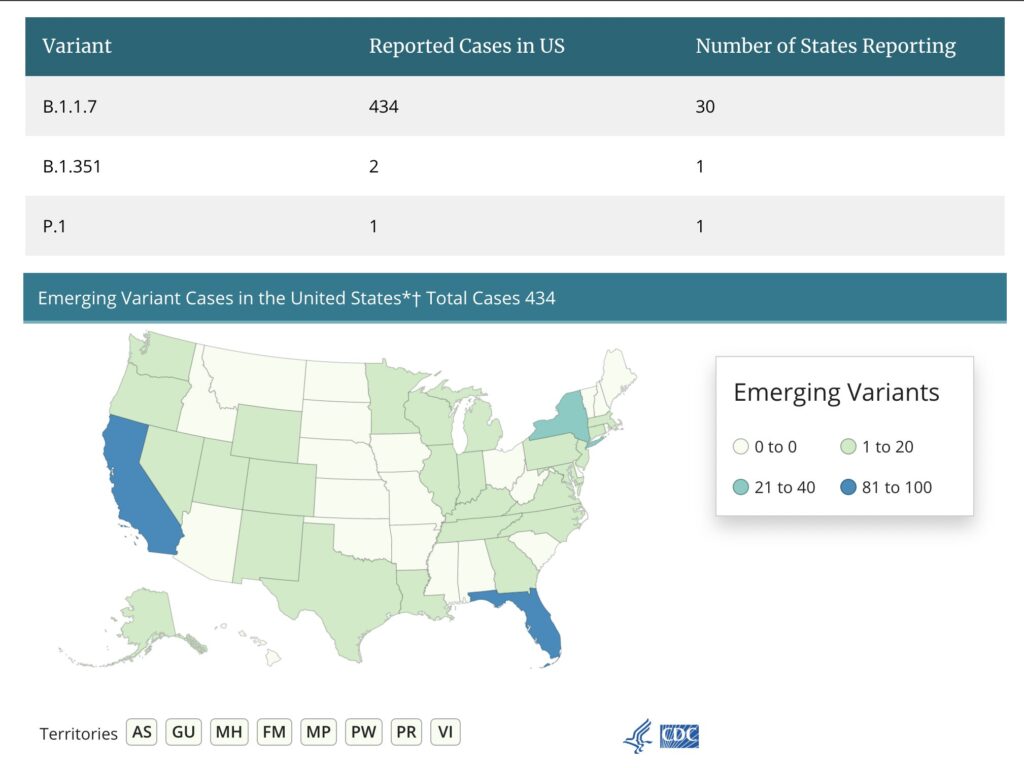
Although cases are declining nationwide, they are still at an incredibly high level. Modelers at the Institute for Health Metrics and Evaluation at the University of Washington project that the variants will add 85,000 deaths by May, bringing the projected deaths up to 594,623. The model also accounts for the possibility of states relaxing social distancing measures after part of the population has been vaccinated. We are currently at a critical juncture in this pandemic and we must continue to double down on precautionary measures.
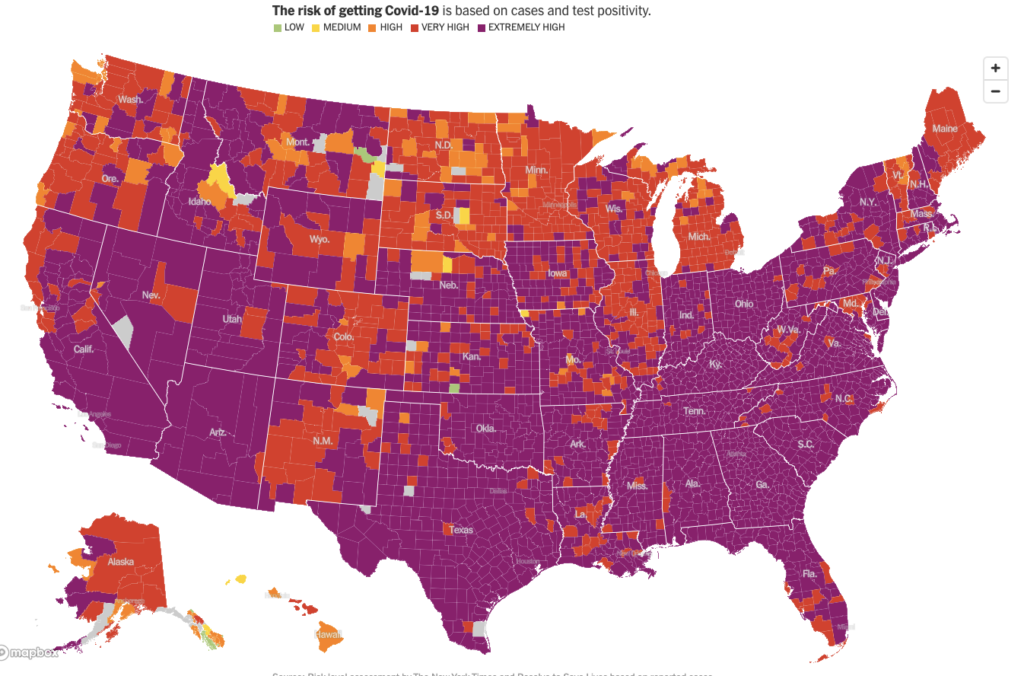
Let’s take a look at some of the latest scientific developments:
- Much of this week’s scientific discussions revolved around schools. According to a CDC report, reported student mask-wearing was high, and the Covid-19 incidence among students and staff members was lower than in the county overall (3,453 versus 5,466 per 100,000). Among 191 cases identified in students and staff members, only seven cases (3.7%), all among students, were linked to in-school spread. In an accompanying commentary, the authors called for measures such as shutting down indoor dining to keep schools open. Additional modeling from colleagues Alyssa Bilinski and Dr. Carl Bergstrom shows the importance of testing to slow the spread in schools, as well as the vaccination of teachers (which is more important and practical than students, for now).
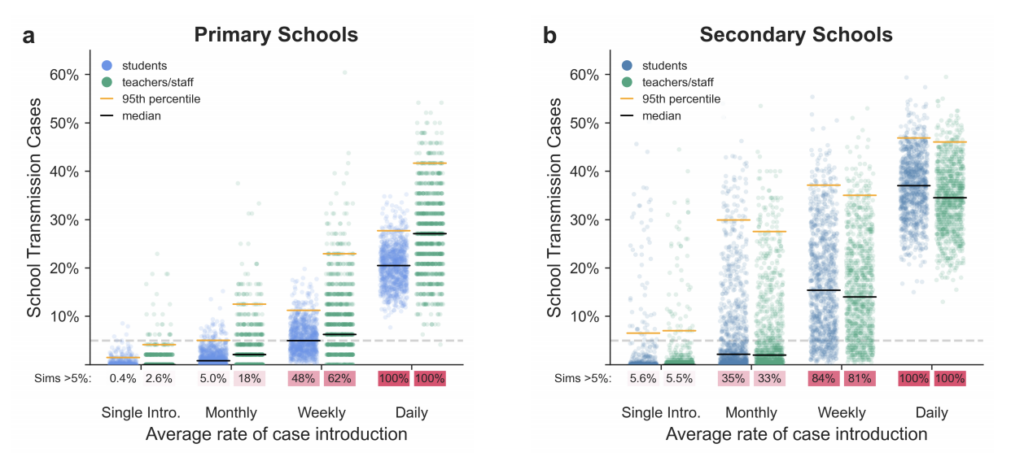
- An analysis published in STAT found that tens of thousands of Covid-19 deaths are going unreported in the U.S., with far more missed in counties that strongly supported former President Trump.
- The New York State attorney general accused the Cuomo administration of undercounting coronavirus-related deaths at nursing homes by as much as 50 percent, according to a report released on Thursday.
- There were promising results from antibody drugs made by Regeneron and Eli Lilly. Both have shown to prevent severe infection but display little efficacy against the variant first discovered in South Africa. There are also possible preliminary positive results on the efficacy of a drug called colchicine, which is taken orally and may help reduce mortality rates.
- A new study suggests that protective antibodies can be transferred through the placenta, and the baby may receive more of them if a mother is infected with Covid earlier in her pregnancy.
- According to a study published in JAMA, heavy smokers had a 2.25 times higher odds of hospitalization and were 1.89 times more likely to die following a Covid-19 diagnosis when compared with never smokers.
The U.S. hit a record for vaccinations on Saturday, with 1,693,241 reported as being administered between Friday and Saturday. This is promising, and we can expect the pace of vaccination to ramp up significantly in the coming weeks. However, there are still unsolved issues and bottlenecks in the process. The Daily Beast’s Erin Banco reported on irregularities throughout the vaccine distribution pipeline, indicating that there could be as many as 20 million doses unaccounted for across the country. A failure from the previous administration to enact a federal strategy has led to states complaining about lack of supply, while simultaneously holding doses in state stores, at the point of delivery, or at unknown locations. The Biden administration has spent this past week attempting to locate these doses and will now encourage states to use all doses, allocating 10 million doses total for shipment next week. This is a 16% increase from this past week. States will also be able to know their weekly allocations three weeks in advance, a huge improvement from the current notification of one week. Despite all these changes, it is clear that more investment must be made in the distribution process. A GAO report found that of the $16.3 billion spent on Covid-19 vaccines and therapeutics by Operation Warp Speed last year, just $377 million (2.3%) was directed to vaccine distribution (and part of that amount went to purchase vials and other ancillary supplies).
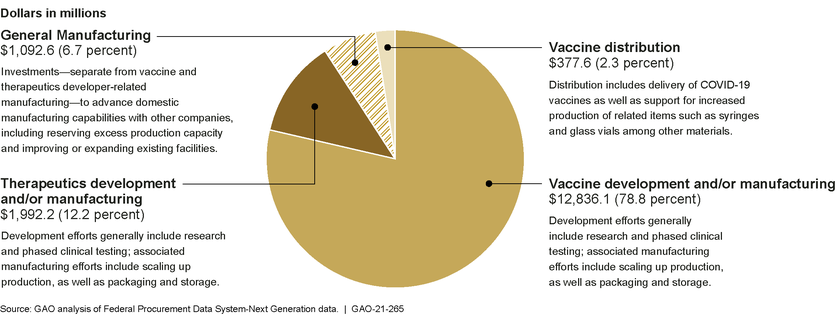
A few other updates on vaccines:
- Johnson & Johnson’s single-shot vaccine’s preliminary analysis found it to be 66% effective at preventing moderate to severe disease 28 days after vaccination, computed by taking an average of multiple countries (including South Africa). The vaccine reduced severe disease alone by 85%. Most importantly, no one who took the vaccine died from Covid-19, including in South Africa. The ease of this vaccine to transport (only requiring refrigeration) will make a huge difference in vaccinating the world.
- An early analysis of the Novavax vaccine in Britain found that it had an efficacy rate of nearly 90%. But in a small South Africa trial, the efficacy rate dropped to just under 50%.
- According to recent lab studies, both the Pfizer and Moderna vaccines have been found to be effective against the variants first discovered in the UK and South Africa. However, antibody titers may be lower against the South African strain, but they are still protective.
- The Biden administration has ordered 100 million more doses each of both Pfizer and Moderna vaccines, ensuring that the U.S. has 600 million doses of the top leading vaccines by the summer.
- Sanofi has agreed to produce millions of doses of Pfizer’s vaccine in the coming months.
- West Virginia continues to excel in distribution, relying on community pharmacies and the National Guard.
- New Hampshire has joined a small list of states only vaccinating residents, in an effort to prevent “vaccine tourism” or second home owners traveling to receive vaccines.
- Far-right and anti-vaccine protestors blocked access to Dodger Stadium in Los Angeles on Saturday, causing the mass vaccination site to shut down for an hour.
- Merck announced it is stopping development of its vaccine due to disappointing results and turning to therapeutics.
- Preliminary data from the Israeli health ministry and Maccabi show possibly even higher efficacy after two doses than Pfizer’s trial efficacy of 95%. Another preprint showed a 51% reduction in infections 13 days after the first dose.
- The head of Philly Fighting Covid, a startup founded by a college student with no healthcare expertise, currently faces allegations of selling personal data of individuals at the state’s largest vaccination site and pocketing vaccines for personal use. You have to read the story to believe it.
- Further analysis from Lauren Weber and Hannah Recht at Kaiser Health News found that in 23 states publishing demographic data, Black Americans are still receiving covid vaccinations at dramatically lower rates than white Americans.
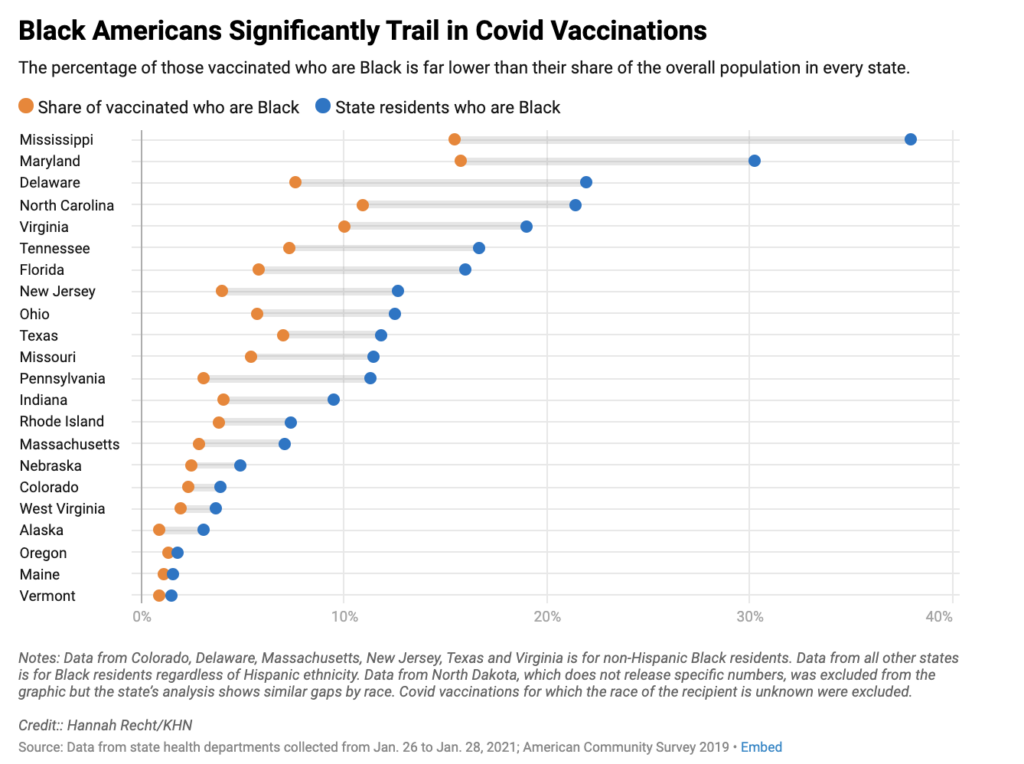
Let’s move on to our discussion of higher education.
Higher education
Here’s a roundup of this week’s higher ed news:
- The University of California, Davis, is providing free testing, masks and quarantine housing to tens of thousands of people who live nearby, in an effort to protect both the college and nearby community. It’s very impressive.
- A form created by a Harvard senior and circulated online Monday invited members of the Class of 2021 to participate in an in-person graduation trip to a tropical destination during the pandemic.
- Both the University of Michigan and Michigan State University are under stay-at-home orders in response to a rise in cases (and in the case of UMich, the B.1.1.7 variant).
- “There are people who really still believe it’s just the flu because it doesn’t affect everyone to the point they’re on a ventilator,” one Penn student told The Daily Pennsylvanian’s Pia Singh. “I would like my normal lungs back.”
- A new CDC report was published on Notre Dame’s early outbreak in August, during which 371 cases were reported and the school went into a 2-week period of online instruction. This enabled a ramp-up of testing capacity. Having more testing on arrival would be beneficial.
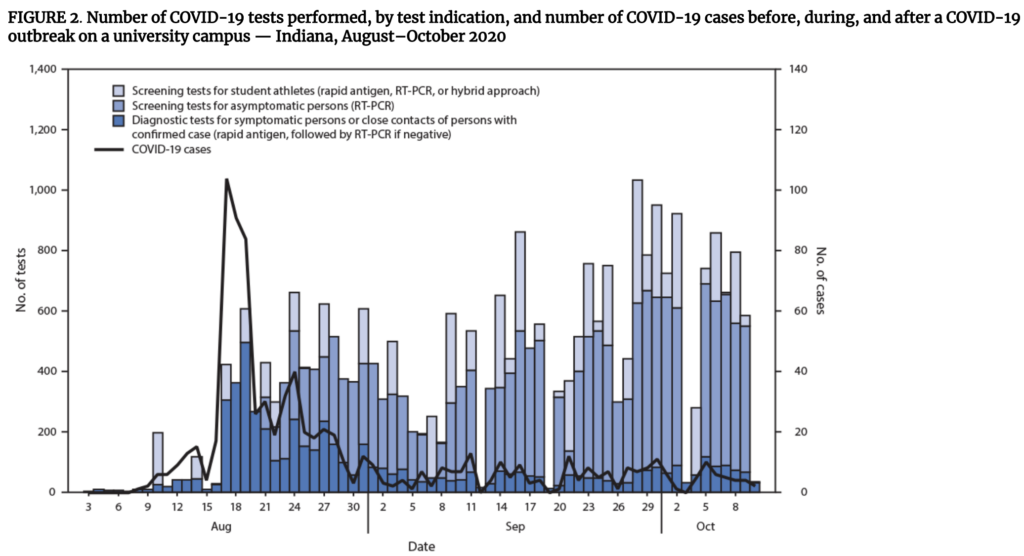
- According to reporting from the Brown Daily Herald’s Livia Gimenes, Brown University will have 2,055 more students living on campus in the spring compared to the fall — a 181% increase. With higher densities, colleges will have to double down on mitigation measures.
- Pitzer College will join the list of schools that will remain online for the spring.
- I talked with Vermont Public Radio’s Liam Elder-Connors about spring college reopenings, and how the first few weeks are critical to curbing infections. This comes as Norwich University has placed its students into room quarantine as cases rise.
- Some colleges have been participating as vaccine delivery sites, distributing vaccines to high-risk frontline workers and other individuals in the community.
- The Middlebury Campus’ Hannah Bensen reported on the results of an all-student survey on the fall semester. More than a third of students (38%) said the semester exceeded expectations, while almost 40% said that it was worse than expected. Nearly one in 10 students experienced intrusive thoughts of suicide which worsened during the semester.
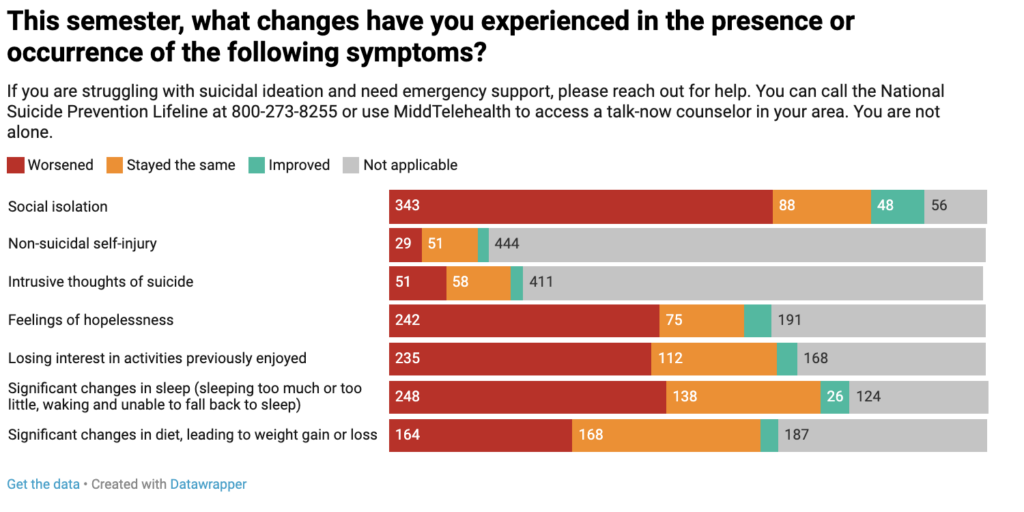
The Good Stuff
Let’s roll the clips of the good stuff. In my usual tradition, I feature my favorite stories from the week. Here are my Top 10.
- The Bidens’ two dogs, Champ and Major have officially moved into the White House. The Washington Post answers defining questions, such as who actually takes the dogs out.
- Stuck in the snow with vaccine doses that would expire in hours, public health workers in Oregon went from car to car to give shots to nearby drivers.
- Star poet laureate and newest sensation Amanda Gorman will perform at the Super Bowl.
- Bernie Sanders’ mittens and ensuing memes have raised $1.8 million for Vermont charities.
- A snowy owl was spotted in Central Park for the first time in 130 years.
- The New York Times takes us into Los Angeles’ largest mass vaccination site, where Mayor Eric Garcetti occasionally volunteers.
- A late-night freezer failure sent Seattle health officials scrambling to use 1,600 doses. Many recipients showed up in their pajamas.
- For the first time in 37 years, Budweiser is not airing a commercial during the Super Bowl. Instead, the company is redirecting advertising dollars to support Covid-19 vaccines awareness and education.
- At her visit to NIH to receive her second dose of the vaccine, Vice President Kamala Harris reflected on her mother and her contributions. Harris’ mother, Shyamala Gopalan, was a breast cancer researcher who had “two goals in her life,” the vice president said: “To raise her two daughters and end breast cancer. In fact, little-known fact, my first job was cleaning pipettes in my mother’s lab.”
- Supply chain constraints and higher demand for cereal have led to a shortage of Grape-Nuts.
Conclusion
Over a year into the pandemic (and a year since I left China after being forced to repatriate — see my experiences here), we now have a playbook of what works. Mask-wearing, social distancing, ventilation and testing are all important tools we must use to suppress the virus. With the spread of these new variants, we must double down on precautionary measures, including increasing the number of layers in masks. It is quite likely that the B.1.1.7 variant (first discovered in the UK) will become more prevalent in the U.S. and the other variants to an extent as well. We must accelerate the pace of vaccination with highly efficacious vaccines in order to induce protection before the virus continues to mutate more dangerously. As Brown University School of Public Health Dean Dr. Ashish Jha notes, “For those of you keeping score at home / 26 million Americans are known to have had Covid, 420K of them died from Covid / 29 million Americans have gotten Covid vaccines, 0 have died from COVID vaccines / When it comes to generating immunity / vaccine > infection / Easier, way way safer.”
And no, Governor Cuomo, it is not a good time to dine indoors on Valentine’s Day and get married with 150 people in March.
I’d like to thank all the student journalists with whom I have the pleasure of working. In the next weeks and months ahead, they will become vital in chronicling their colleges’ paths forward for the spring and beyond. Support their work by reading it.
My best to all for good health.
Like what you see? Don’t like what you see? Want to see more of something? Want to see less of something? Let me know in the comments. And don’t forget to subscribe to the weekly newsletter!
For more instant updates, follow me on Twitter @bhrenton.

